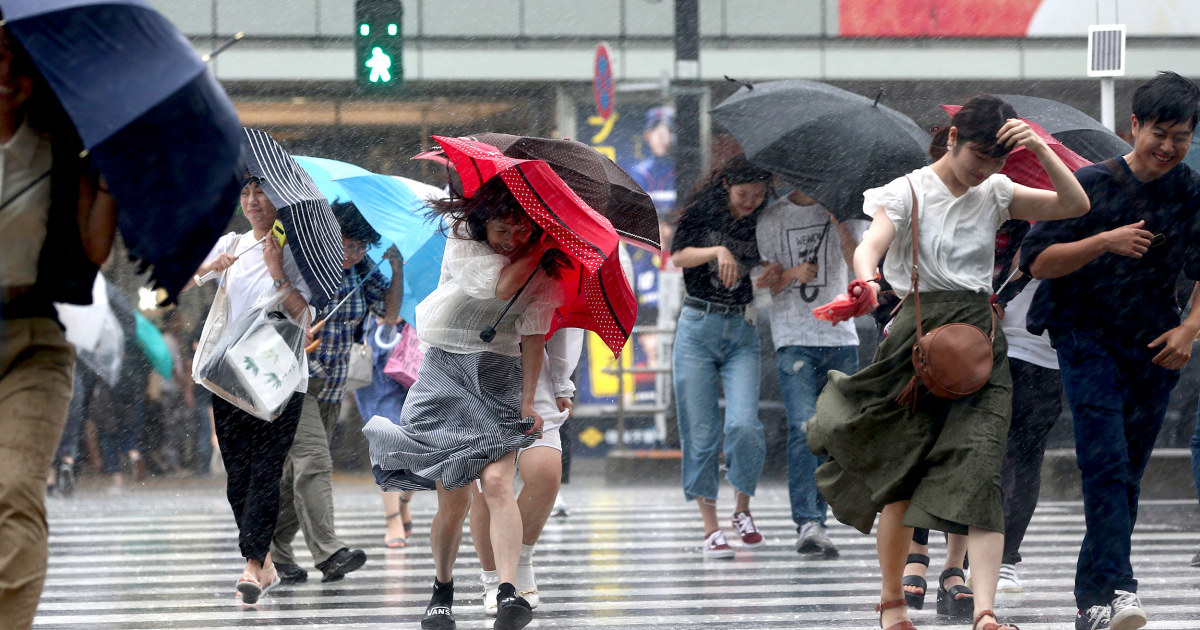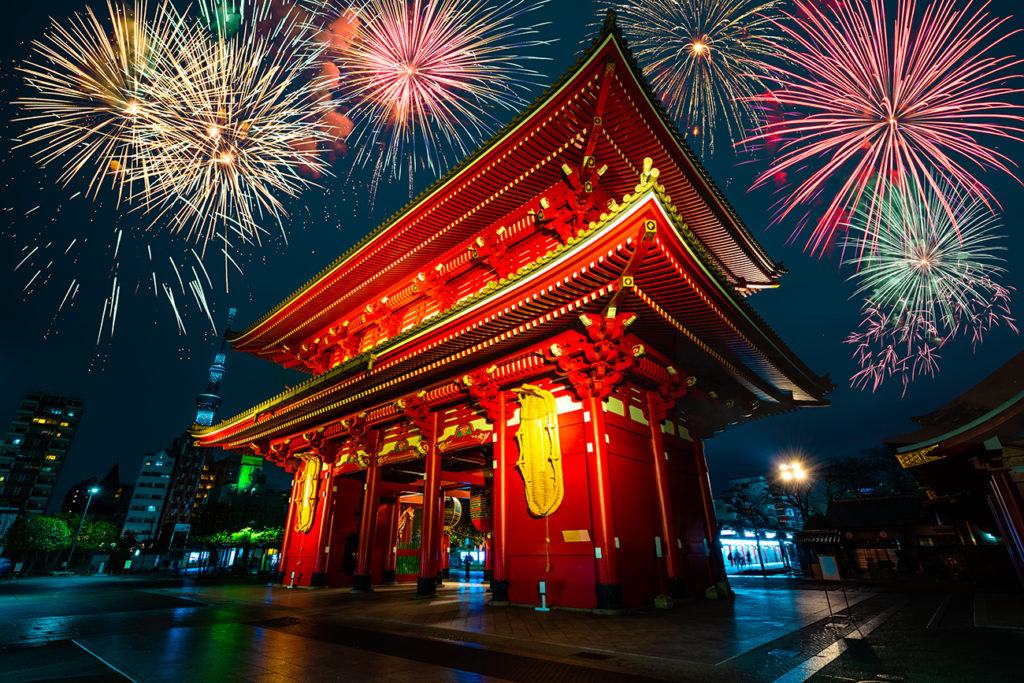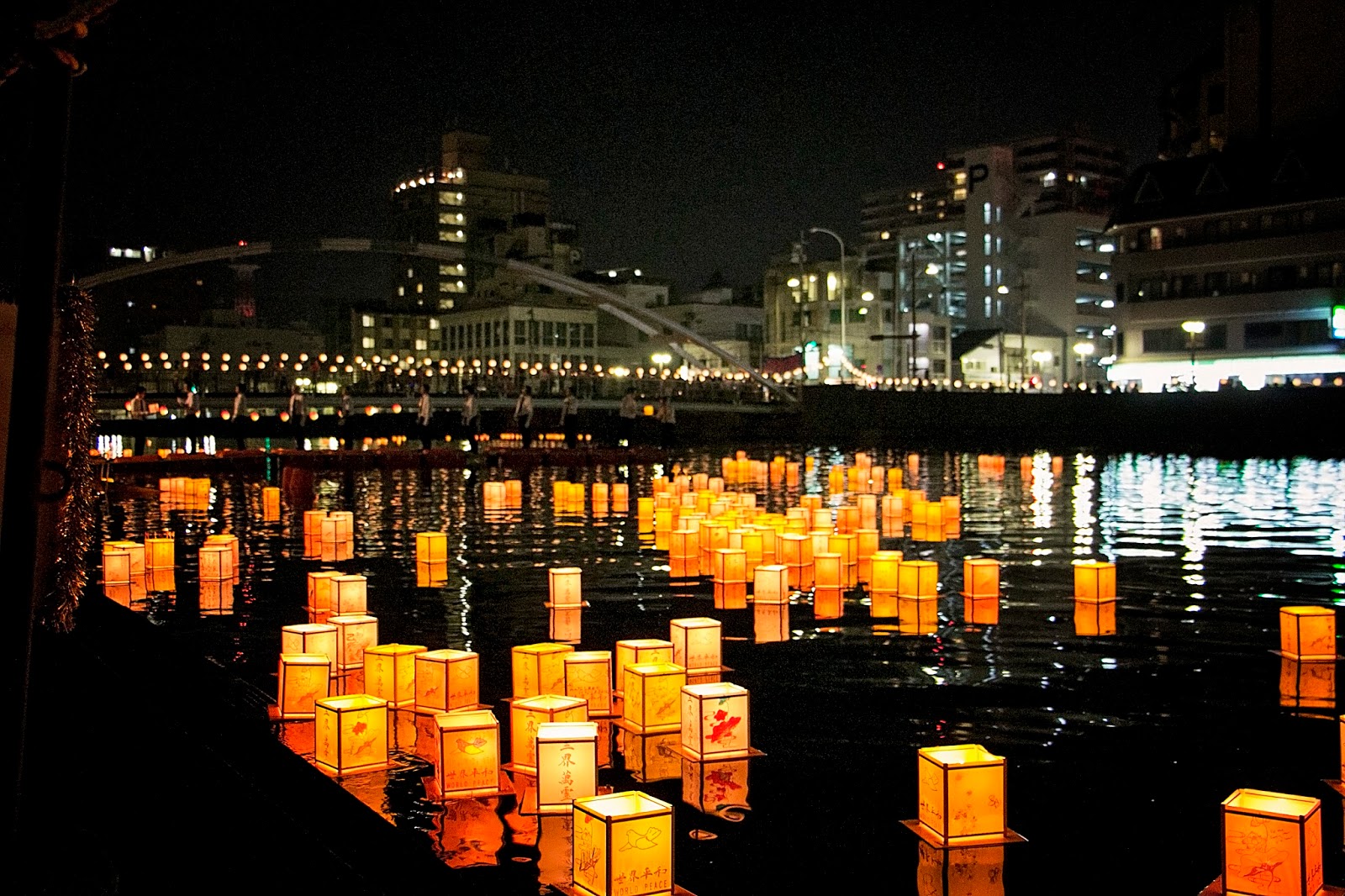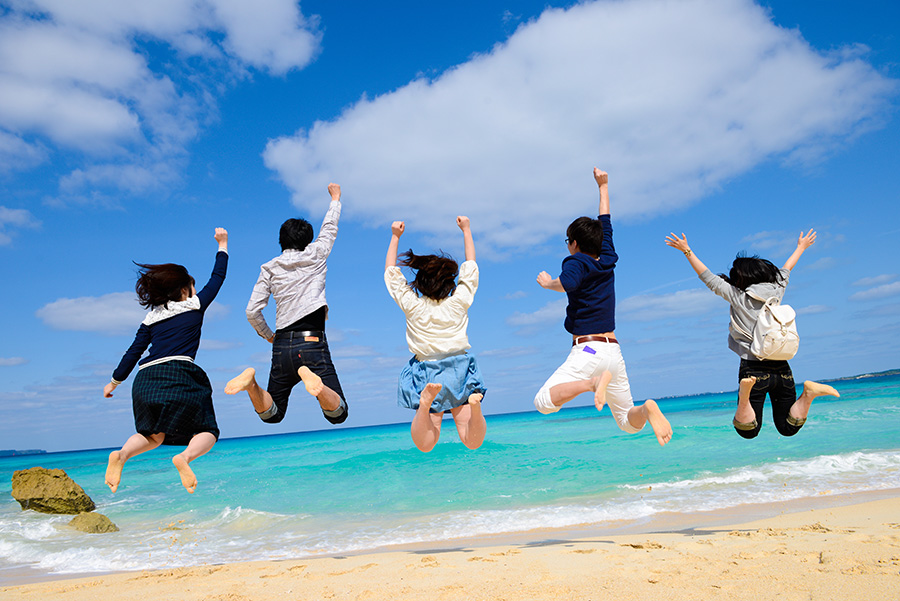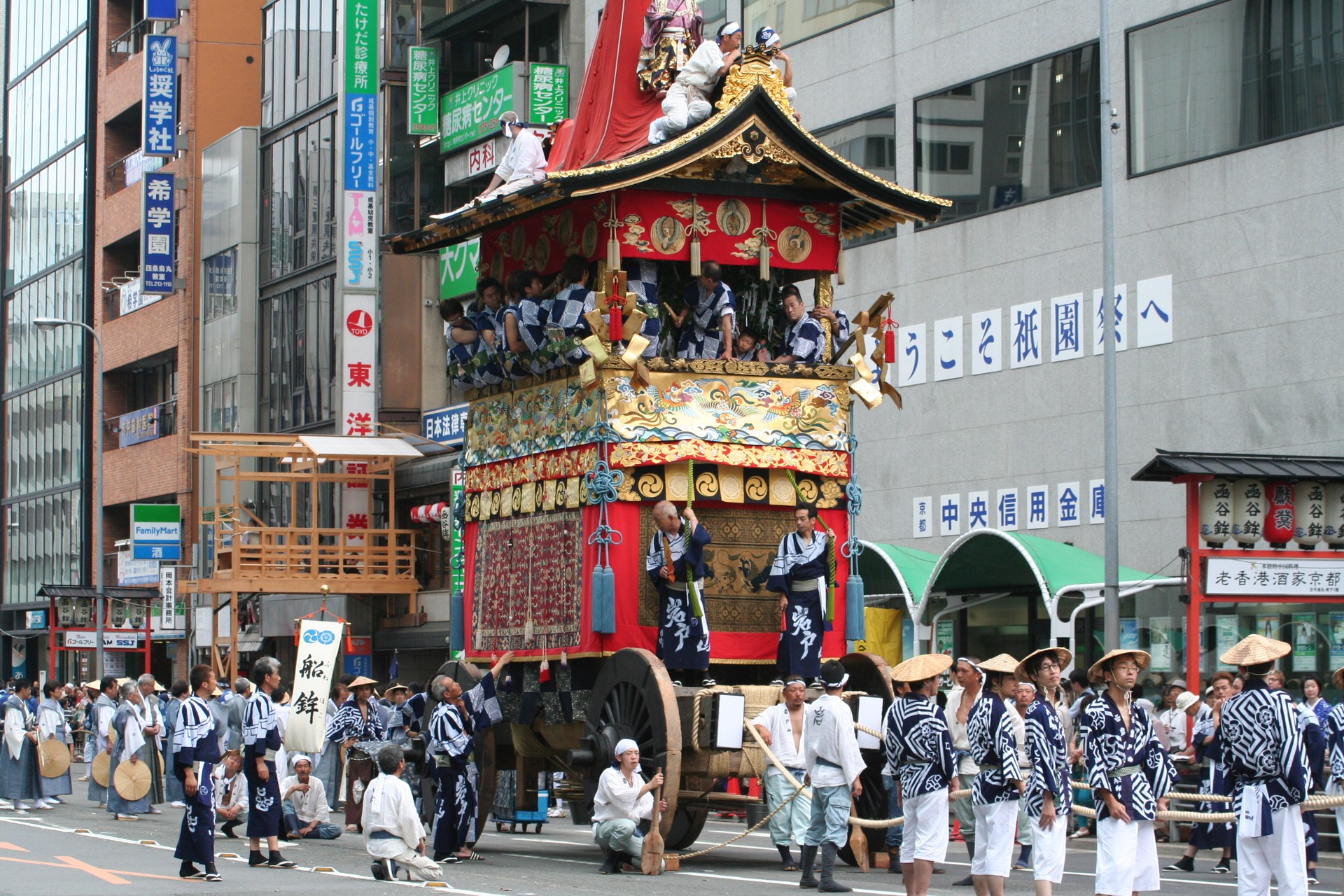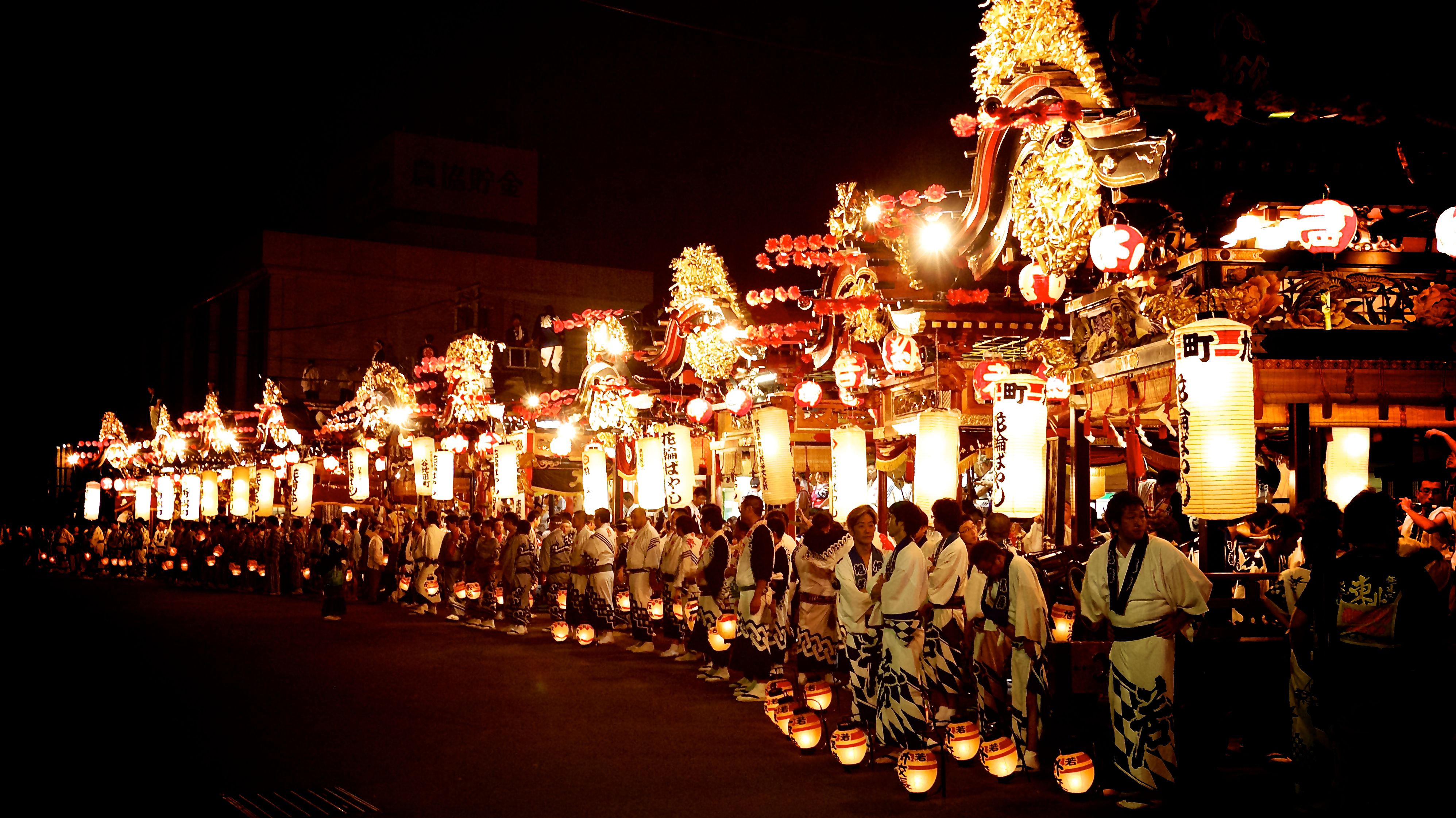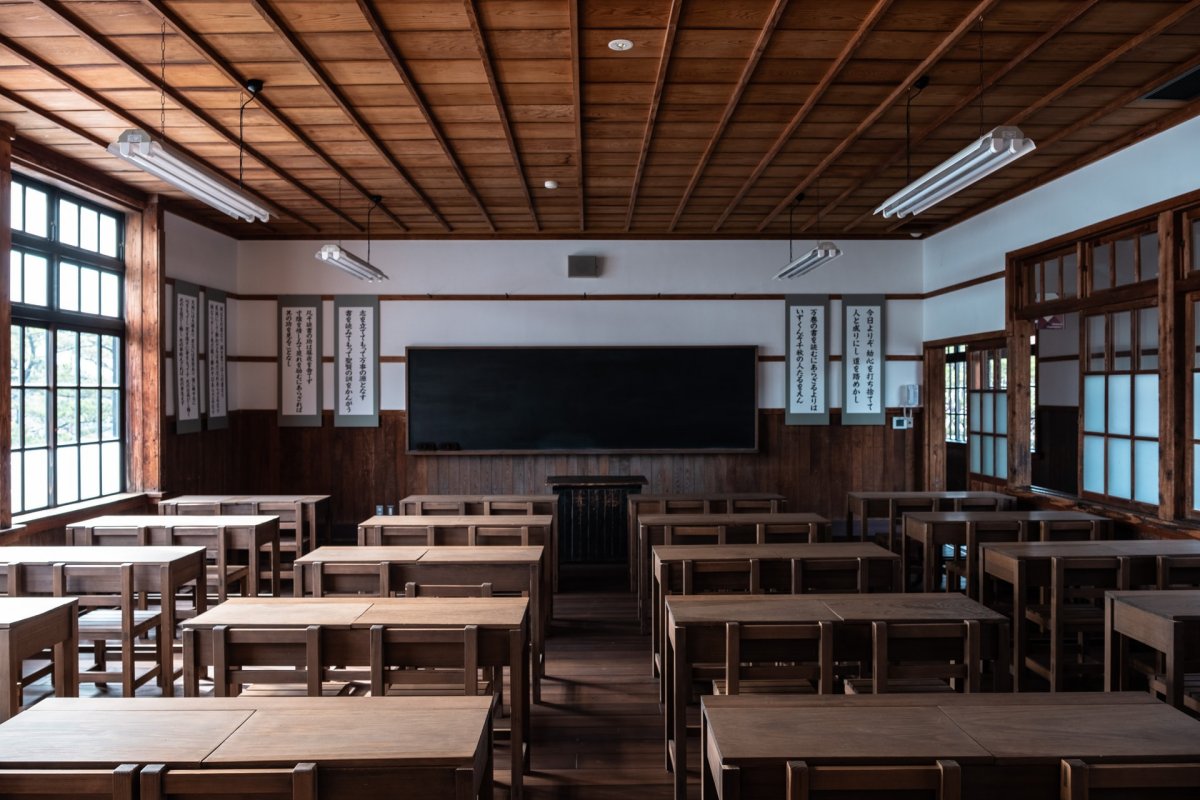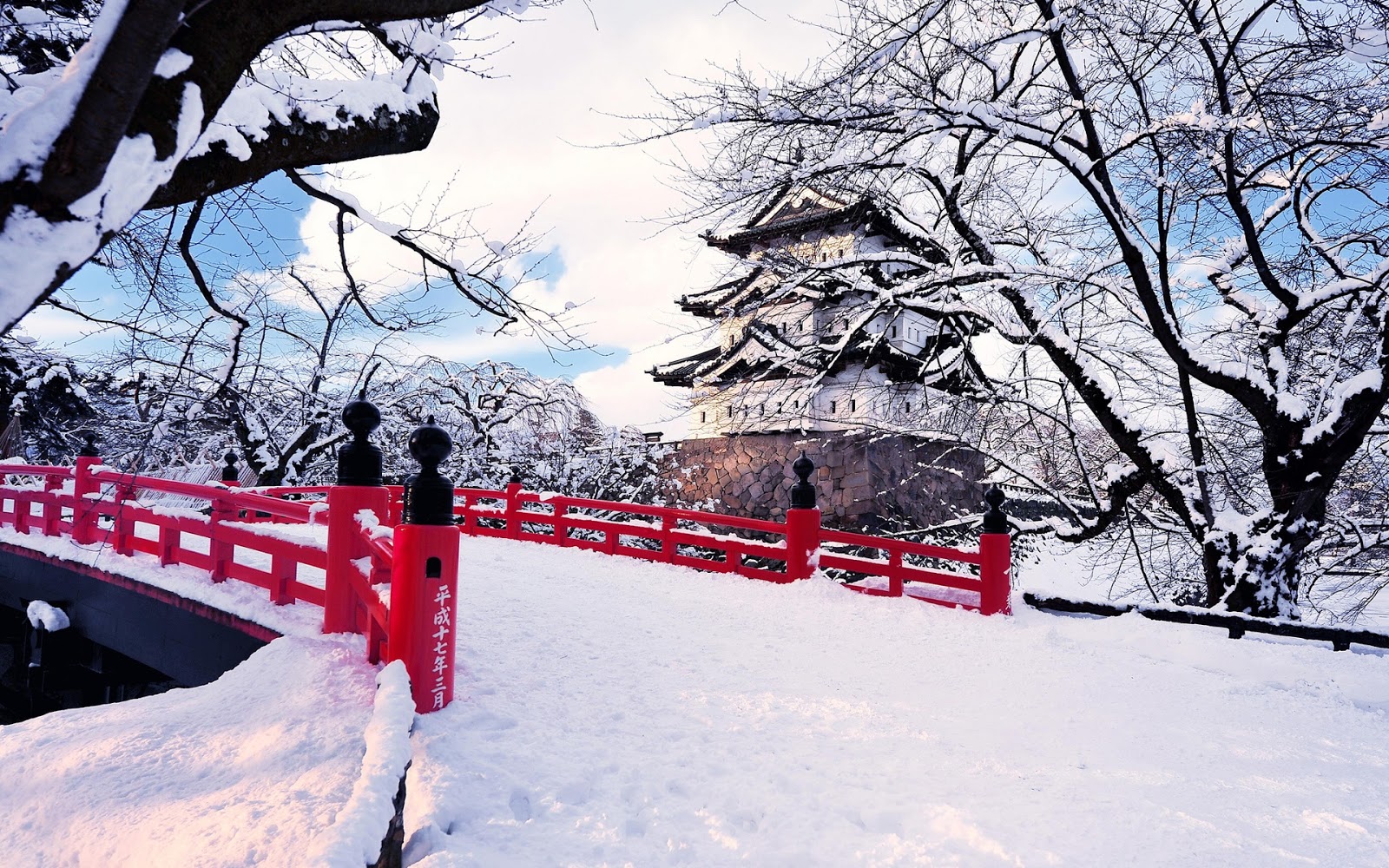Win a Free Trip to Japan!
Experience cherry blossoms and ancient temples
Planning a trip to Japan can be exciting, but knowing the worst time to visit Japan can save you from overcrowded tourist attractions and inflated prices. Japan’s peak tourist seasons, such as Golden Week, New Year’s Holiday, Cherry Blossom Season, and major festivals, often lead to congested transport and sky-high accommodation costs. Additionally, school holidays and summer vacation bring increased domestic travel, while the typhoon season poses significant weather risks. Understanding these periods will allow you to choose a more peaceful and budget-friendly time to explore this fascinating country.
Golden Week: The Busiest Time to Visit Japan
Golden Week is undeniably the worst time to visit Japan if you aim to avoid crowds and high prices. This annually celebrated string of holidays occurs from late April to early May, and it marks one of the busiest travel periods in the country.
During Golden Week, you’ll encounter:
- Packed tourist destinations: Popular attractions like Kyoto’s temples, Mount Fuji, and Tokyo’s Shibuya Crossing become extremely crowded.
- High accommodation prices: Hotels and ryokans significantly increase their rates to capitalize on the high demand. Booking late can often mean no availability at all.
- Busy transport systems: Both domestic and international flights, as well as bullet trains (Shinkansen), experience high volumes of passengers, leading to sold-out seats and possible delays.
Comparison Table: Regular Week vs. Golden Week
| Regular Week | Golden Week | |
|---|---|---|
| Tourist Spots | Moderate crowd levels | Overcrowded |
| Accommodation Prices | Standard rates | High to very high rates |
| Transport Availability | Readily available | Often fully booked |
Tips to Navigate Golden Week:
- Plan Early: If you must travel during Golden Week, book your accommodation and transport well in advance.
- Explore Lesser-Known Spots: Consider visiting off-the-beaten-path destinations to avoid the massive crowds.
- Adjust Your Itinerary: Spend Golden Week days in quieter areas and visit major attractions either just before or immediately after the holiday period.
In summary, Golden Week represents the worst time to visit Japan due to the overwhelming number of domestic travelers, inflated prices, and congestion everywhere. Plan accordingly to make the most of your trip while avoiding these peak travel woes.
New Year’s Holiday: High Prices and Crowds
When discussing the worst time to visit Japan, the New Year’s Holiday certainly qualifies as one to avoid. This period, typically from December 29 to January 3, brings a combination of high prices and immense crowds.
One of the main reasons to steer clear of Japan during this time is the spike in accommodation costs. Hotels, ryokans, and other lodgings significantly increase their prices due to the surge in demand. Not only do prices rise, but availability also becomes scarce, making it challenging to secure a place to stay.
Moreover, transportation options also get overwhelmed. Trains, buses, and even domestic flights operate at full capacity, with tickets often sold out weeks in advance. If you don’t book early, you might find yourself with limited travel options.
Additionally, tourist attractions experience a significant influx of visitors during this period. Iconic places like Kyoto’s temples, Tokyo’s shopping districts, and major shrines witnessing ceremonies will be particularly packed. The crowds can detract from the overall experience, making it harder to appreciate the sights and sounds.
Tourists who insist on choosing the New Year holiday, Golden Week and other peak periods to travel, in order to make the crowded journey more interesting, please customize some representative souvenirs to draw a successful end to the tour! Witness your footsteps by designing iconic buildings such as Kyoto temples, Mount Fuji, shrines, or other distinctive landscapes into exquisite Custom Keyrings . Although the journey is full of challenges, it is also very valuable to think that the beautiful and colorful Keyrings can also be used for collections, gifts, and hanging small objects.
Comparison Table: Peak vs. Off-Peak Travel Costs
| Aspect | New Year’s Holiday | Off-Peak Season |
|---|---|---|
| Hotel Prices | High | Moderate to Low |
| Transportation Fares | High | Moderate |
| Tourist Attraction Crowds | Extremely Crowded | Manageable |
By considering these factors, it’s evident that the New Year’s Holiday is among the worst times to visit Japan. Opting for an off-peak period will enhance your travel experience and help you avoid excessive costs and massive crowds.
Cherry Blossom Season: Overcrowded and Expensive
Cherry blossom season is a breathtaking time to witness Japan’s natural beauty, but it can also be the worst time to visit Japan for several reasons. This period, typically between late March and early April, sees an influx of both international tourists and locals eager to participate in hanami (flower viewing) parties.
Reasons to Avoid Cherry Blossom Season:
Overcrowding:
- Famous spots like Ueno Park in Tokyo and Maruyama Park in Kyoto become exceptionally crowded.
- Finding a peaceful viewing spot can be a challenge due to the large numbers of visitors.
- Long queues for popular attractions and public transportation delays are common.
High Prices:
- Accommodation costs surge during this period as demand skyrockets.
- Flight prices to Japan and domestic travel fares increase significantly.
- Dining in popular hanami spots can be expensive, with some locations charging premiums.
Comparison of Visiting Costs:
| Season | Hotel Prices | Flight Prices | Crowds |
|---|---|---|---|
| Cherry Blossom Season | High | High | Very High |
| Off-Peak Season | Low | Moderate | Low |
| Winter (excluding holidays) | Moderate | Low | Moderate |
While the cherry blossoms are a sight to behold, the overcrowding and high costs make this one of the worst times to visit Japan if you prefer a leisurely and budget-friendly trip. For a less stressful experience, consider visiting outside this peak tourist season.
If you still want to go cherry blossom viewing. In crowded places, we can use unique luggage tags to identify luggage. Even if the luggage looks similar or confusing, Luggage Tags can help to distinguish it.
You can write your name and contact information on the luggage tag. When luggage is accidentally lost or misplaced, other people can contact you through the information on the luggage tag.
When checking in luggage, we can also use luggage tags to quickly identify luggage
Obon Festival: Packed Transport and Tourist Spots
One of the worst times to visit Japan is during the Obon Festival. This traditional Buddhist event, held annually in mid-August, brings families together to honor the spirits of their ancestors. While culturally enriching, it poses significant challenges for travelers.
Why Avoid Obon Festival?
Transportation Nightmares:
- Overcrowded Trains: Both local and long-distance trains experience a surge in passengers, making it difficult to find seats or even board a train.
- Busy Airports: Domestic and international flights are often fully booked, with long lines and delays.
- Traffic Jams: Highways endure heavy traffic, especially around major cities and tourist destinations.
Tourist Spots Overrun:
- Temples and Shrines: Popular sites like Kyoto’s Kiyomizu-dera and Tokyo’s Senso-ji see an influx of visitors, resulting in long waits and crowded conditions.
- Scenic Areas: Iconic spots like Mount Fuji and Hokkaido’s flower fields become extremely busy, detracting from their natural beauty.
Comparing Obon to Regular Seasons:
| Aspect | Obon Festival | Off-peak Season |
|---|---|---|
| Train Availability | Often overbooked | Generally available |
| Traffic Conditions | Severe congestion | Moderate to light |
| Tourist Attractions | Packed with visitors | Less crowded, more enjoyable |
Tips to Avoid the Obon Rush:
- Plan Ahead: Book flights and accommodation well in advance if you must travel.
- Alternative Dates: Consider visiting just before or after the festival to enjoy a quieter experience.
- Offbeat Locations: Explore less popular destinations that offer a cultural experience without the crowds.
In conclusion, while experiencing the Obon Festival’s rich traditions can be appealing, the packed transport and tourist spots make it one of the worst times to visit Japan. Plan your trip wisely to avoid the pitfalls of this busy period.
Summer Vacation: Sweltering Heat and High Traffic
Summer vacation, typically spanning July and August, is considered one of the worst times to visit Japan for several reasons.
Firstly, sweltering heat blankets the country during these months. Temperatures frequently exceed 30°C (86°F) with high humidity, making outdoor activities uncomfortable and potentially hazardous. For those unaccustomed to such climates, dealing with heat exhaustion or dehydration becomes a real concern.
Secondly, traffic congestion and crowded tourist spots characterize this period. Japanese schools are on break, leading to a surge in domestic travel. Popular destinations such as Kyoto, Tokyo Disneyland, and coastal beaches witness overwhelming foot traffic. This spike makes it difficult to enjoy the serenity and unique attractions Japan has to offer.
Key downsides of visiting Japan during summer vacation are:
- Unbearable Heat: With temperatures often reaching unbearable levels, many travelers find it hard to explore outdoor sites.
- Busy Attractions: Tourist landmarks and popular spots experience heavy crowds due to domestic tours and international visitors.
- Extended Travel Times: Increased travel activity leads to slowed transportation services, making intercity commutation a challenge.
| Factor | Impact |
|---|---|
| Temperature | High, 30°C (86°F) + |
| Humidity | High |
| Tourist Density | Very High |
| Travel Time | Increased due to Traffic |
Therefore, if avoiding heat and heavy crowds is a priority for you, consider planning your trip outside of Japan’s summer vacation. This period certainly ranks high on the list of the worst times to visit Japan.
Major Japanese Festivals: High Tourism Peaks
Japan’s major festivals are vibrant and culturally enriching, but they can also be the worst time to visit Japan for those looking to avoid crowds and high prices. These festivals attract not only international tourists but also a large number of domestic visitors, leading to packed accommodations and skyrocketing costs. Key festivals to be aware of include:
- Gion Matsuri (Kyoto, July): One of Japan’s most famous festivals, featuring grand parades and traditional performances. The influx of visitors during this time means higher hotel prices and crowded streets.
- Obon Festival: This event sees people traveling across Japan to honor their ancestors, resulting in packed trains and full hotels.
- New Year Celebrations: Temples and shrines are filled with people making their first spiritual visit of the year (hatsumode), making it a busy period for tourists.
| Festival | Location | Peak Travel Period | Impacts |
|---|---|---|---|
| Gion Matsuri | Kyoto | Entire month of July | High accommodation costs, packed public transport |
| Obon Festival | Nationwide | Mid-August | Crowded tourist sites, difficult to find lodging |
| New Year Celebrations | Nationwide | End of December to Early January | Temples and shrines packed, higher prices |
In summary, attending these festivals can provide a unique cultural experience but are often the worst time to visit Japan due to the massive tourist influx and elevated expenses. By planning around these peak periods, you can enjoy a more relaxed and cost-effective trip to Japan.
School Holidays: Increased Domestic Travel
When considering the worst time to visit Japan, school holidays often come to mind due to increased domestic travel. During this period, you will face higher foot traffic not only at famous tourist spots but also on public transportation.
Key periods of school holidays in Japan:
- Spring Break: Late March to early April.
- Summer Vacation: Late July to the end of August.
- Winter Break: Late December to early January.
Why School Holidays Are Problematic
- Crowded Attractions: Major sights like Tokyo Disneyland, Kyoto’s temples, and Mt. Fuji attract swarms of local visitors.
- Public Transport Stress: Trains and buses become congested, especially in urban areas and tourist-heavy regions.
- Higher Accommodation Rates: Hotels and accommodations frequently raise prices due to increased demand.
Comparison of School Holiday Periods
| Holiday Period | Crowded Attractions | High Accommodation Prices | Congested Public Transport |
|---|---|---|---|
| Spring Break | High | Moderate | High |
| Summer Vacation | Very High | Very High | Very High |
| Winter Break | High | High | Moderate |
Tips to Navigate School Holidays
- Book in advance: Secure your accommodations and transport tickets well ahead of time.
- Visit lesser-known sites: Explore off-the-beaten-path destinations to avoid the crowds.
- Travel off-peak hours: Use public transport during non-peak hours to avoid congestion.
In conclusion, if you aim to experience Japan without the interference of domestic holidaymakers, avoiding school holidays is a wise choice. These periods can indeed be the worst time to visit Japan due to the influx of local tourists, making it challenging to enjoy the serene and picturesque aspects of the country.
Typhoon Season: Unpredictable Weather Risks
When considering the worst time to visit Japan, typhoon season stands out due to its unpredictable weather risks. Typhoon season typically spans from July to October, with the peak occurring in August and September. This period often brings heavy rainfall, strong winds, and potential disruptions to travel plans.
Why Typhoon Season is Challenging for Tourists:
- Unpredictable Weather: The occurrence and intensity of typhoons are difficult to predict, which can lead to sudden changes in weather conditions.
- Travel Disruptions: Flights, trains, and other modes of transportation may be delayed or canceled, causing significant inconvenience.
- Safety Concerns: High winds and flooding can pose safety hazards to both locals and tourists.
- Cancellation of Events: Outdoor activities and events might be postponed or canceled, affecting the overall travel experience.
Here’s a quick comparison to highlight the challenges of visiting Japan during typhoon season:
| Aspect | Normal Conditions | Typhoon Season |
|---|---|---|
| Weather | Mild and Pleasant | Heavy rains, strong winds |
| Transportation | Reliable | Frequent delays and cancellations |
| Safety | Generally Safe | Risk of flooding and high winds |
| Events | Regular Schedule | Possible cancellations |
Given the unpredictability and potential risks, typhoon season is arguably the worst time to visit Japan. While some may find adventure in facing nature’s extremes, those looking for a comfortable and hassle-free experience should consider avoiding Japan from July to October. Instead, opting for more stable weather periods can enhance the enjoyment and safety of your trip.
By understanding these risks, you can make informed decisions and plan your visit to Japan during a more favorable season.
Winter Holidays: Ski Resort Rush and Price Surge
When considering the worst time to visit Japan, the winter holiday season often tops the list for several reasons. Primarily, the surge in tourist numbers can create a less-than-ideal experience, particularly at the country’s renowned ski resorts.
Key Issues During Winter Holidays:
- Overcrowded Resorts: Popular ski destinations, such as Niseko and Hakuba, draw massive crowds, both local and international. This overcrowding can lead to long wait times for lifts and a lack of accommodation availability.
- Spiked Prices: Due to high demand, accommodation rates skyrocket. You can expect inflated prices for hotels, ski passes, and equipment rentals.
- Transport Strain: Trains and buses experience high traffic, leading to packed carriages and potential delays, as families and tourists alike travel for the holidays.
- Limited Availability: Premium experiences, such as private lessons or guided tours, get booked out months in advance, limiting your options.
Here is a brief comparison to make things clearer:
| Factors | Summer Off-Season | Winter Holidays |
|---|---|---|
| Accommodation Rates | Lower | Significantly Higher |
| Crowd Levels | Moderate | High |
| Transport | Less congested | Overcrowded |
| Activity Availability | Readily available | Limited |
| Overall Experience | Pleasant | Stressful |
In conclusion, if avoiding crowds and high prices is essential for you, the winter holiday season may be the worst time to visit Japan, especially if you’re planning to hit the slopes. Carefully consider this before scheduling your trip to ensure a more enjoyable and cost-effective experience.
Frequently Asked Questions
When is the worst time to visit Japan in terms of crowd levels?
The worst times to visit Japan in terms of crowd levels are during major national holidays and school vacations. Two key periods are the Golden Week from late April to early May and the Obon Festival in mid-August. During these times, many locals and tourists alike travel, leading to crowded attractions, increased hotel prices, and fully booked transportation.
Why are prices higher during certain periods in Japan?
Prices tend to spike during peak travel seasons such as the Golden Week, Obon Festival, and New Year’s holiday. Hotels, flights, and local attractions adjust prices due to the surge in demand, making it more expensive for travelers. Additionally, limited availability can lead to higher costs for last-minute bookings.
How does the weather impact the worst times to visit Japan?
Weather can significantly impact your travel experience in Japan. The summer months, especially July and August, can be uncomfortably hot and humid. Meanwhile, the rainy season from early June to mid-July brings frequent downpours, making outdoor activities less enjoyable. Additionally, the winter months, particularly in regions like Hokkaido, can be very cold and snowy, which might not suit all travelers.
What are the alternatives to visiting Japan during peak times?
To avoid crowds and high prices, consider visiting Japan during the shoulder seasons. Late March to early April (excluding the cherry blossom peak) and from late October to early December are excellent times. These periods often offer milder weather, fewer tourists, and more reasonable prices for accommodations and attractions.
Are there any specific events or festivals to avoid due to high crowds?
Yes, there are particular events that draw large crowds which you might want to avoid if you prefer a more peaceful trip. The Kyoto Gion Matsuri in July and the Tokyo Marathon in February are two such events. While these festivals can be culturally enriching, they also lead to overcrowded public spaces, making it difficult to enjoy sightseeing and local activities.
